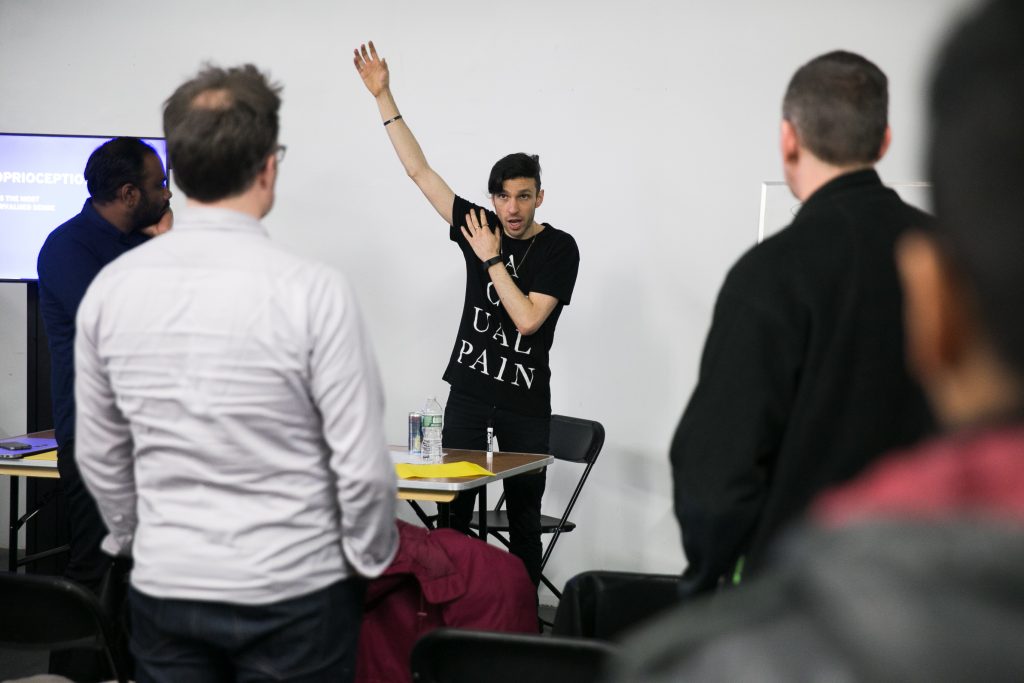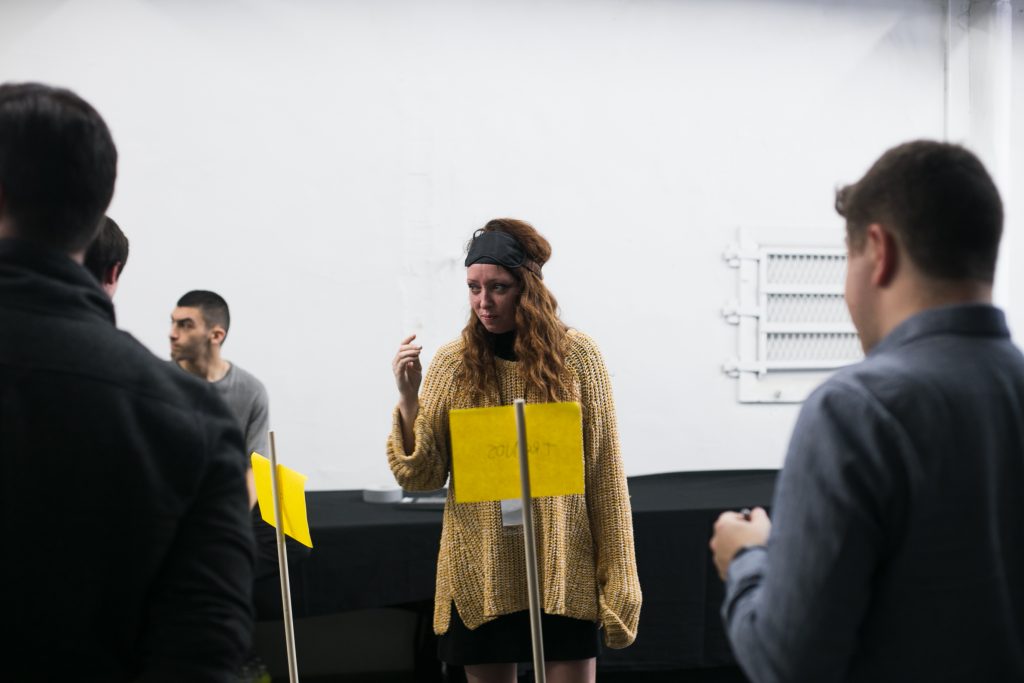For VERSIONS 2016, hosted by Killscreen and NEWINC, I gave a workshop about perception and designing for the senses in virtual reality. The results were positive and I got some emails asking me to share this, so I wrote a short post on what it’s about. Here are the slides:
After the presentation, I asked all the participants to exercise designing for VR, without a headset. The purpose is to use body intuition before using a computer, because VR is focused around the body. I’ve derived some of these methods from design methods rumored to be used in Mark Bolas‘ lab at USC (If anyone at the lab is reading this, please confirm!). In order to design what feels good in virtual space, start with shutting down the most obvious inputs.
To make that happen, you need:
- Blindfold
- Laser pointer
- Sharpies
- Large drawing pad
- One million post-it notes.
Divide the participants into groups of 3. One is the designer, the other two help out. The designer’s role is to point at things and say what they want to see there, the helpers create large post-it notes and stick them to walls, chairs, etc. There are three rules:
- The Designer is blindfolded. They only have two chances to lift their blindfold. After the third, the design is final.
- All of the designers instructions are given when blindfolded. Lifting the blindfold is only used to looking around. No talking, not pointing, certainly no touching.
- No talking. Only the designer can speak, and they should feel completely alone while doing so.
With this, some hidden features emerge:
- The designer is capable of spatial reckoning without audiovisual cues.
- Our proprioception and motion planning skills can do a lot of design work, on things from menus to spaces to interactions.
- Interaction and experience come before graphics.
The interesting thing I find with this is how many, many, people have good spatial reckoning skills embedded in them. They use them daily for processing instructions, planning routes to walk faster in the subway, reaching behind things, driving – these are core human skills that map trivially into VR.



No Comments
Comments for ““The Painful Introduction to Virtual Reality”, Versions 2016” are now closed.